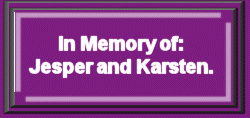

Stress is often caused by information overload. Information may come in the form of:
Bits of information lie about the home or office waiting for attention. Some will be recognized; others will be overlooked.
The overlooked ones will either cause extra stress in the long run or never be missed. Those that will never be missed present unneeded stress via their ability to loom over their owner waiting for undeserved attention.
Getting your information sources under control will help get you under control.
When Bill created the Windows organizing system, he used the metaphor of the file cabinet and folders. As the OS evolved, it included special folders that every user would need:
Then he buried some information that the computer needs, but that the user does not often need to access. He put this information way down at the bottom of the pile under W for Windows.
Once a computer user becomes familiar with the system and files things as Bill intended, it becomes easier to find most documents. Of course, there will always be those elusive few.
The file cabinet and folders works on your computer; let it work for you in your home or office.
While you can use plastic crates designed to store file folders or the cardboard boxes your books arrived in, file cabinets that match your decor will be more pleasant to use. They will make you feel better about your environment. They are worth the investment. Several vendors sell easy-to-assemble furniture kits. Lateral and vertical styles are available in many wood finishes to compliment any room of the house.
I keep a two-drawer lateral file in my bedroom. It is the same style as my bedroom furniture and serves as a bedside table. Its surface is large enough to accommodate tissues, lamp, phone, laptop and a book or two. Inside, I store essential documents that do not need to be accessed frequently:
I keep a second two-drawer lateral file in my den. The wood matches my den nicely. It serves as an end table. Its surface holds a lamp phone/answering machine and family photos. Frequently used documents are stored inside: class lists, sports schedules, pending assignments.
My computer desks each have a two-drawer vertical file built in. They hold:
At the the front of each drawer is a file folder holding plastic tabs and paper inserts ready to be added as needed.
Use an oversized Rolodex for addresses, phone numbers and emails. You can staple business or appointment cards right to the cards.

One other very important file is my appointment file. This is not a filing cabinet; it is a horizontal wooden box with 31 slots--one for each day of the month. I put party invitations, appointment cards and memos in the appropriate day, throwing them out or refiling as the date transpires.
An Aside On Photographs and Recipes
Photos and recipes are different from other bits of paper. Both are cherished in their own way. Both can be stored in boxes or books. Photo storage boxes are made in many decorative patterns. While they may seem like cheating, they are easy to use. It only takes a few seconds to add new photos to the collection. For those with time on their hands, the traditional photo album with today's archival papers are great.
Because archive quality storage in not needed for recipes, there are more options for storing them. Whichever you choose, remember to pick an attractive vessel that you will enjoy using for storage.
Just keep what you will need. When you open the mail, throw away the envelopes. Throw away catalogs you won't order from. Throw away direct mail offers you don't plan to take advantage of. Throw away.
Throw away the photos that are out of focus, make you or a loved one look awful, or show someone's big pink finger. Give away the doubles of good photos. Put them in an envelope and mail them off; you will make someone's day brighter.
While you will probably want to hold onto nonfiction books like PSP manuals or cookbooks, you don't need to keep every novel you ever read. Give them to a library, hospital, nursing home or thrift shop.
If you have been stapling business and appointment cards into your Rolodex, you can throw away appointment cards after each visit (or once they've been entered in a calendar or Palm Pilot).
After filing the one or two items you may want to keep, throw away the magazine.
Go on to Too Much Stuff?